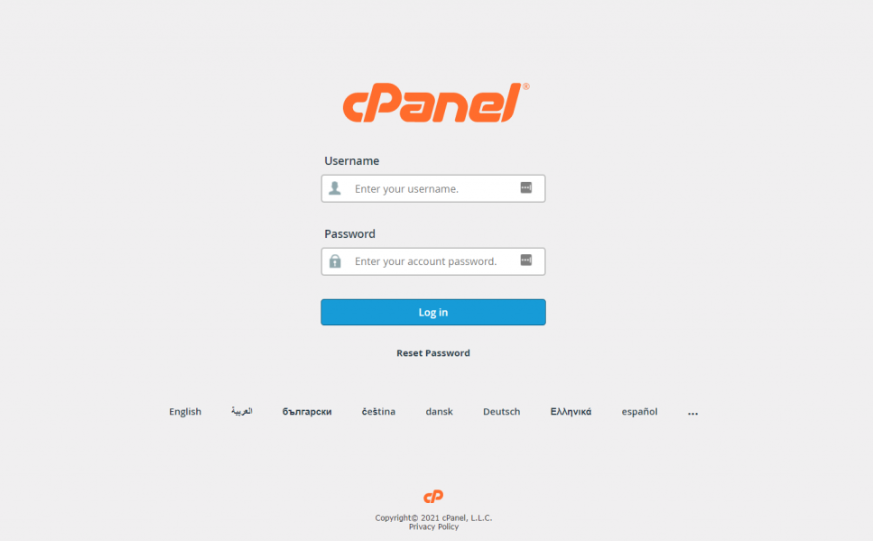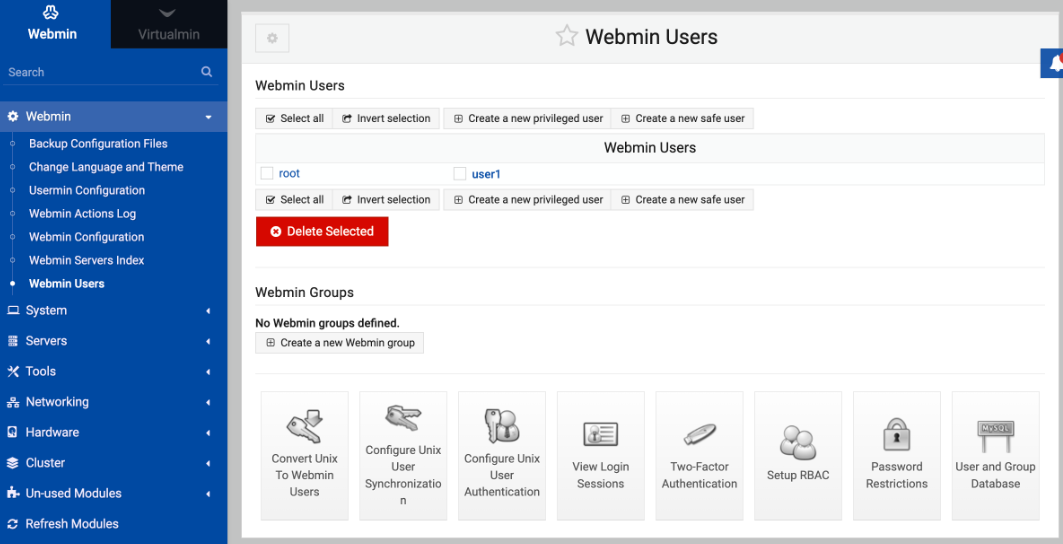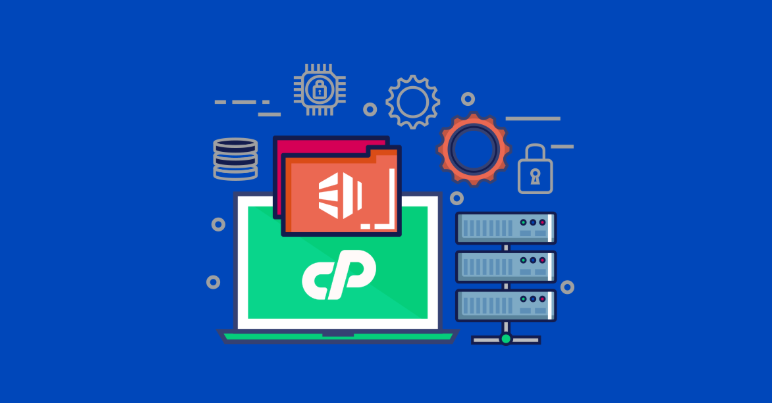An Introduction to Hosting Control Panels
As a result, control panels are indispensable tools in the web hosting field, enabling the management of servers and websites. These interfaces provide options for various activities, such as domain control, file management and transfer, e-mail message creation, and application delivery, all in one place. Webmasters’ choice of CP greatly defines their working process, convenience, and many other hosting-related factors.
Two prominent control panels often come up in discussions: cPanel and Webmin. Each has features that may not be available in another, and it targets different users in many ways. However, cPanel is known for its simple and easy-to-use interface. It also involves domain management and configuration of email accounts and databases, which is useful to those who enjoy user-friendly services. It also supports many applications that add to the software’s strong appeal for users who usually run content management systems like WordPress or Joomla.
However, Webmin uses a different technique. Since it is an open-source control panel, it is designed with many customization features. This makes it suitable for users who need maximum control and freedom in their web host. This level of customization makes it easier to improve and optimize, which is generally helpful for users with technical knowledge. In the same regard, Webmin has the advantage of supporting many modules and extensions, further assisting users in customizing hosting according to their preferences.
Understanding the fundamental differences between cPanel and Webmin is the first step in making an informed decision. Whether you prioritize ease of use or the ability to customize your hosting environment, the choice between cPanel and Webmin will depend on your unique needs and technical expertise.
cPanel’s Key Features
cPanel is a powerful panel for hosting due to its many opportunities, and it is among the most popular hosts. It also has an application manager that accepts third-party applications and includes Content Management Systems like WordPress, Joomla, Drupal and more. It is, therefore, simple to deploy these apps, update them, and manage them using simple tools that do not require very complex skills.
cPanel’s interface includes a comprehensive file manager, allowing users to upload, delete, and edit files directly from the control panel. Additionally, cPanel’s database management tools allow users to create, modify, and manage databases efficiently, particularly for MySQL and PostgreSQL.
Email management is a major and unique feature that supports using cPanel. It remains very convenient to configure emails, personalize filters against spam, and forward all emails. This goes a long way in enhancing the channel through which professional communication is easily achieved.
cPanel has provisions for installing and upgrading the scripts that run various tasks. With these tools, users can actually create copies of their sites and relieve them in case of a problem. This feature makes sense to change data accuracy and organizational stability positively.
The other advantage, perhaps one of its biggest strengths, is that it seamlessly handles DNS configurations. Users benefit from the functionality of quickly creating, deleting or updating certain DNS records that efficiently manage domains and subdomains.
Last but not least, the commercial version of cPanel comes with additional products that help shield the sites from hackers or any other security threats by having options like IP blocking, directory protection and installing secure sockets layer certificates. All these integrated security measures ensure that users have the confidence to protect their Online Properties.
Webmin’s Key Features
Webmin is well regarded for its robust functionality and degree of customization flexibility, which matters to all those interested in configuring the entire hosting system. This particular software is also free for modification and meets all typical functional specifications. This flexibility is supplemented by several modules and extensions that users can install to add functionalities to Webmin. These modules span all aspects of serving, including web serving, name serving, database serving and file sharing and are designed for technical users.
Webmin’s primary operation has a modular appearance, with various features turned on or off to match users’ needs, making the layout highly efficient. This will prove very helpful to those operating specific or complicated server systems. Users can also script anything they want, giving even more control and automation for hosting management.
Second, Webmin supports all OS – the varieties of Linux and BSD distributions and Windows, thus it is versatile for the usage on different types of servers. It also includes an interface for creating user accounts where administrators can set up privileges and roles to achieve safe authorization.
With Webmin, users can manage their server remotely, providing the convenience of accessing server controls from any location. The control panel’s flexibility and extensive customization options make it a powerful tool for advanced users.
User-Friendliness
When evaluating cPanel vs. Webmin, ease of use plays a pivotal role. As for the pros of using cPanel, the company has developed a user-friendly environment that is even for newbies. Its graphical user interface (GUI) makes the system easy to use; thus, users can execute activities encompassing domain management, email accounts, and databases without contacting professional support. It has a neat structure of icons and categories, which lets users navigate through multiple options and manage elements easily with little to no tutorials.
Webmin, in contrast, is designed for users willing to do more of the work themselves. Though functional and comprehensive, its interface can be less visually intuitive than cPanel’s. Ideological aspects of the design carry out performance overlooks, which may be intimidating to newcomers in the domain of hosting control panels. But those with computing knowledge can take time to work on the interface and gain much control compared to other applications, such as Suse, Redhat, and Mandriva.
The difference in user experience can be attributed to each control panel’s target audience. While cPanel aims to simplify hosting management for a broad user base, including beginners, Webmin is geared towards those who prefer more granular control and are willing to learn the system’s intricacies.
Security Considerations
Both cPanel and Webmin offer a variety of security features to help protect your hosting environment. cPanel offers Auto SSL, Directory Privacy, and IP Manager features. The above features enable protection against threats from unauthorized access and cybercriminals. Also, the procedural settings for security on cPanel are easily manageable, reaching novices in the website development field.
As it concerns security, Webmin also has numerous measures to ensure the server’s tight security. Security aspects like two-factor authentication, SSL, and SSL encryption empower secure connections. With Webmin, users can set permissions, narrowing down access to some areas in the server to a few people. This is especially helpful to upper-level users who need specific controls on the computer’s use.
Both control panels allow you to update frequently to strengthen protection against new threats to your system.
Cost Analysis
Cost is a significant factor for many users when deciding between cPanel and Webmin. cPanel operates on a licensing model, meaning users must pay a recurring fee based on the accounts or servers they manage. While this cost can add up, users benefit from ongoing updates and dedicated support. This model offers better security and predictability for those organizations that need professional support and frequently updated software.
However, Webmin has the advantage of being cost-free, which would be ideal, particularly when one has little capital to purchase software. As an open-source solution, Webmin does not require licensing fees, allowing users to allocate their financial resources elsewhere. This may be especially useful for a startup or a small business that needs to reduce certain expenditures.
However, one must admit that certain issues can arise when implementing Webmin. More precisely, there may be moments when more support or help with technical complexity will be required. The open-source nature of Webmin means that while community support is available, users may need to invest time in troubleshooting or seek professional assistance for complex issues. This could translate into additional costs, whether through hiring IT professionals or dedicating significant time to manage the system.
On the other hand, cPanel’s licensing fees include access to a comprehensive support system. This can be a critical advantage for users who prefer having a dedicated support team available to resolve any issues promptly. The decision between the two will ultimately depend on whether you prioritize a low-cost solution with potential DIY elements or a paid option with included support and updates.
Concluding Thoughts on Selecting the Right Control Panel
Selecting the appropriate control panel for your hosting needs involves carefully evaluating each option’s features, usability, security, and cost. Despite its ease of use, cPanel boasts a very friendly interface, making it easy for users who may not have a technical background to handle it comfortably. Its implementation costs are a perpetual subscription fee but guarantee access to updates and professional services that are important for clients who require reliable services.
However, Webmin is more straightforward to customise and flexible for advanced users who want to configure hosting in detail and have a necessary toolkit. This reduces startup costs since the software is open source, and developers are not paid a license fee to use the technology.
However, the potential need for technical expertise and community-based support should be considered when opting for Webmin.
Your decision should align with your specific requirements and capabilities. If you value a streamlined, user-friendly experience with comprehensive support, cPanel may be better. Conversely, Webmin could be more suitable if you have the technical skills and desire a customizable-friendly option.
In other words, focusing on these factors will allow you to identify the right control panel to address the specific hosting goals and objectives within a coherent and efficient management environment.




